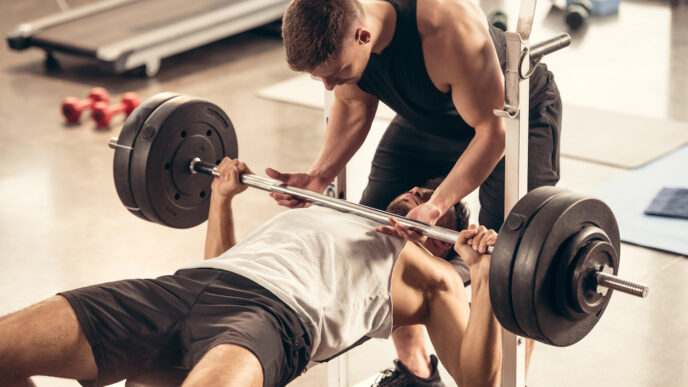Flexibility is a fundamental component of physical fitness, referring to the ability of your muscles and joints to move through their full range of motion. While often overlooked in favor of strength or endurance training, flexibility is essential for maintaining mobility, balance, and overall physical health. Whether you’re an athlete, a fitness enthusiast, or simply looking to improve your daily movement, incorporating flexibility exercises into your routine can enhance your quality of life.
What is Flexibility?
Flexibility is the capacity of a joint or muscle to move comfortably and efficiently through its intended range of motion. It is influenced by several factors, including:
- Muscle Length: How elastic and pliable your muscles are.
- Joint Structure: The shape and structure of your joints.
- Age and Gender: Flexibility tends to decrease with age but can improve with consistent practice.
Benefits of Flexibility
- Improved Range of Motion:
- Enhances the ability to perform everyday tasks and physical activities with ease.
- Injury Prevention:
- Reduces the risk of strains, sprains, and other injuries by promoting balanced muscle function.
- Better Posture:
- Alleviates muscle imbalances and tension, supporting proper alignment.
- Enhanced Athletic Performance:
- Increases agility, balance, and efficiency in sports and exercise.
- Reduced Muscle Tension and Pain:
- Relieves tightness and discomfort, especially in areas prone to stiffness like the neck, shoulders, and lower back.
- Improved Circulation:
- Encourages better blood flow to muscles, aiding recovery and overall health.
Types of Flexibility
- Static Flexibility:
- Holding a stretch in a fixed position to lengthen muscles and improve range of motion.
- Example: Touching your toes and holding the position.
- Dynamic Flexibility:
- Active movements that take muscles and joints through their full range of motion.
- Example: Arm circles or leg swings.
- Ballistic Flexibility:
- Using quick, bouncing movements to push a muscle beyond its typical range of motion.
- Note: This type is generally recommended for advanced athletes due to its higher injury risk.
- Active Flexibility:
- Stretching a muscle using only the strength of opposing muscles.
- Example: Lifting your leg high and holding it without external support.
- Passive Flexibility:
- Using an external force (like a partner, prop, or gravity) to deepen a stretch.
- Example: Using a strap to pull your foot toward you in a seated hamstring stretch.
Flexibility Exercises to Incorporate into Your Routine
- Static Stretches:
- Hamstring Stretch: Sit on the floor, extend one leg, and reach for your toes.
- Shoulder Stretch: Bring one arm across your chest and hold it with the opposite hand.
- Child’s Pose: Sit back on your heels and stretch your arms forward on the floor.
- Dynamic Stretches:
- Lunges with a Twist: Step forward into a lunge and rotate your torso toward the extended leg.
- Leg Swings: Swing one leg forward and backward or side to side.
- Yoga Poses:
- Downward Dog: Stretches the hamstrings, calves, and spine.
- Cat-Cow Pose: Improves spinal flexibility and mobility.
- Pilates Movements:
- Spine Stretch Forward: Sit with legs extended and reach forward to stretch the back.
- Roll-Ups: Slowly roll your spine up and down from a lying to sitting position.
- Foam Rolling (Self-Myofascial Release):
- Targets tight areas to release tension and improve flexibility.
How to Improve Flexibility
- Be Consistent:
- Stretch regularly, ideally 3–5 times a week, for noticeable improvements.
- Warm-Up First:
- Perform light cardio or dynamic stretches to prepare muscles for deeper stretching.
- Hold Stretches:
- In static stretching, hold each position for 15–30 seconds to allow muscles to lengthen.
- Focus on Breathing:
- Deep, controlled breaths help relax muscles and deepen stretches.
- Target All Muscle Groups:
- Pay attention to major areas like the hamstrings, shoulders, hips, and back.
- Progress Gradually:
- Avoid forcing your body into uncomfortable positions; flexibility improves over time.
Measuring Flexibility
- Sit-and-Reach Test:
- Sit with legs extended and reach toward your toes to measure hamstring and lower back flexibility.
- Shoulder Flexibility Test:
- Reach one hand over your shoulder and the other behind your back to see if they can touch.
- Trunk Rotation Test:
- Sit cross-legged and rotate your torso as far as possible on each side.
Flexibility and Other Fitness Components
Flexibility complements other aspects of fitness, including:
- Strength: Flexible muscles perform better and are less prone to injury during strength training.
- Endurance: Stretching reduces muscle fatigue and supports recovery in endurance sports.
- Balance: A flexible body moves more efficiently and maintains stability.
Common Flexibility Myths
- Flexibility is Only for Dancers or Athletes:
- Everyone can benefit from improved flexibility, regardless of fitness level.
- Stretching Before Exercise Prevents Injuries:
- Dynamic stretches are effective before workouts, while static stretches are better post-exercise.
- You’re Either Flexible or You’re Not:
- Flexibility is trainable and improves with consistent effort.
- Stretching is Painful:
- Stretching should create mild discomfort but never sharp pain.
Incorporating Flexibility into Your Fitness Routine
- Begin and End Workouts with Stretches:
- Use dynamic stretches to warm up and static stretches to cool down.
- Try Flexibility-Focused Classes:
- Join yoga, Pilates, or mobility classes for guided flexibility training.
- Use Technology:
- Apps like StretchIt or ROM Coach provide structured routines to improve flexibility.
Flexibility is a cornerstone of fitness that supports movement, balance, and injury prevention. By incorporating regular stretching and mobility exercises into your routine, you can enjoy a more active and pain-free lifestyle. Whether you’re looking to improve posture, enhance athletic performance, or simply feel better in your body, flexibility training is an investment in your long-term health.
Are you ready to stretch your potential and embrace the benefits of flexibility?
Topics: Flexibility Injury Prevention Mobility Physical Fitness Range of Motion Stretching Exercises Yoga













